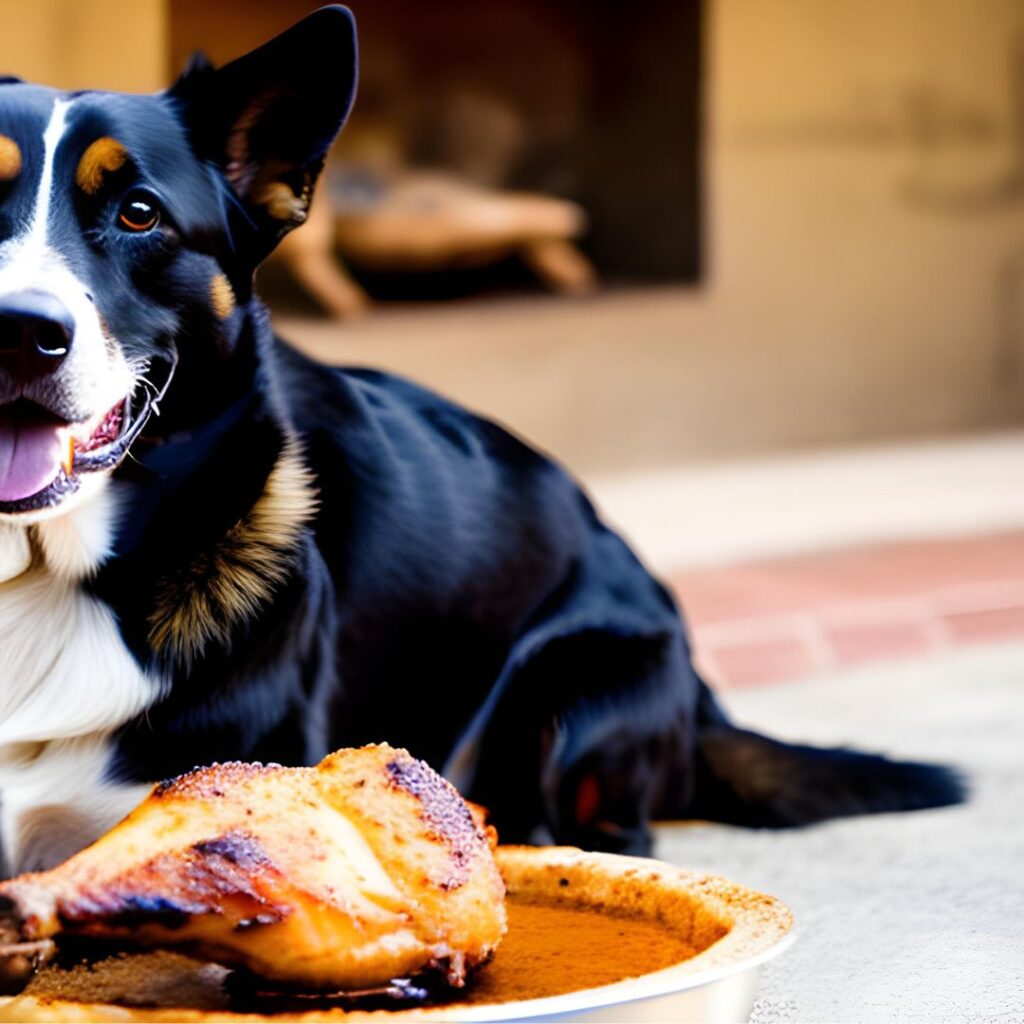When it comes to preparing chicken for your dog, two popular methods are coiling and baking. Both cooking techniques have their own set of advantages and drawbacks. In this blog, we will delve into the differences between these methods and determine which one is more suitable for your pet’s diet.
Table of Contents
Comparison
- Nutritional Value
- Boiling: Coiling, or boiling, chicken helps retain most of the essential nutrients, especially when cooked at a low temperature and for a shorter duration.
- Baking: Baking chicken may cause some nutrient loss due to exposure to high temperatures, but it can still be a healthy option when cooked correctly.
- Fat Content
- Boiling: Boiling chicken reduces its overall fat content, making it an ideal choice for dogs on a low-fat diet.
- Baking: Baking may retain more fat compared to boiling, but it can still be a healthy option if you avoid adding oils or fats during the cooking process.
- Digestibility
- Boiling: Boiled chicken is easier for dogs to digest due to its tender texture and lower fat content.
- Baking: Baked chicken can be more challenging to digest for some dogs, especially if it is overcooked and becomes dry.
- Flavor and Texture
- Coiling: Boiled chicken has a milder flavor and softer texture, which may appeal to picky eaters or dogs with dental issues.
- Baking: Baked chicken has a richer, more intense flavor and a firmer texture, making it suitable for dogs that prefer chewier treats.
- Preparation and Cooking Time
- Boiling: Boiling chicken is a relatively quick and easy method, requiring less preparation and cooking time compared to baking.
- Baking: Baking chicken takes longer due to preheating the oven and longer cooking times, but it can be a more hands-off approach, freeing you up for other tasks.
- Safety Concerns
- Boiling: Boiling chicken reduces the risk of bacterial contamination, ensuring a safe meal for your dog.
- Baking: Baking chicken at the correct temperature also effectively kills bacteria, but it’s crucial to ensure the chicken is cooked thoroughly to avoid any health risks.
- Your options to cease annoying dog habits barking
- Considering Your Dog’s Grooming Needs: A Comprehensive Guide
- Want Joy and Élan in Life? The Pomeranian Helps!
- The Lhasa Apso: A Treasured Pooch from the Rooftop of the World
- Airedale Terrier: A Kid-Friendly Companion or Not?

Grilled chicken for dogs is good?
Grilled chicken can be a good option for dogs when prepared correctly and served in moderation. When grilling chicken for your dog, follow these guidelines to ensure it is a healthy and safe choice:
Avoid using any oils, marinades, or seasonings that could be harmful to your dog, such as onion, garlic, or high-sodium spices.
Make sure the chicken is cooked thoroughly to eliminate any potential risk of bacterial contamination.
Remove the skin before grilling, as it is high in fat and can contribute to obesity or gastrointestinal issues in dogs.
Always remove any bones from the chicken, as cooked bones can splinter and pose a choking hazard or cause internal injuries.
Grilled chicken should not be the primary source of nutrition in your dog’s diet. It can be served as an occasional treat or supplement to their regular balanced diet, which should include various protein sources, carbohydrates, healthy fats, vitamins, and minerals. Always consult your veterinarian before making any significant changes to your dog’s diet to ensure their nutritional needs are met.
What quantity of chicken should be fed to a dog based on its weight in kilograms and pounds?
The amount of chicken you should feed your dog depends on factors such as your dog’s weight, age, activity level, and overall health. As a general guideline, you can follow the 2-3% rule, which means feeding your dog 2-3% of their body weight in food per day.
Here’s a rough estimate of how much chicken you could feed your dog based on their weight:
- 5 kg (11 lbs) dog: 100-150 g (3.5-5.3 oz) of chicken per day
- 10 kg (22 lbs) dog: 200-300 g (7-10.6 oz) of chicken per day
- 20 kg (44 lbs) dog: 400-600 g (14-21.2 oz) of chicken per day
- 30 kg (66 lbs) dog: 600-900 g (21.2-31.7 oz) of chicken per day
- 40 kg (88 lbs) dog: 800-1200 g (28.2-42.3 oz) of chicken per day
Remember that these amounts should be adjusted based on your dog’s individual needs and should not make up their entire diet. It’s essential to provide a balanced diet that includes various protein sources, carbohydrates, healthy fats, vitamins, and minerals.
Always consult with your veterinarian before making any significant changes to your dog’s diet to ensure their nutritional needs are being met. Your vet can provide personalized recommendations based on your dog’s specific requirements.
Conclusion
Both coiling and baking chicken offer unique benefits for your dog’s diet. Boiling chicken may be more suitable for dogs with specific dietary needs or digestive issues, while baking can provide a flavorful and chewy treat for dogs that prefer variety in their diet. Ultimately, the choice between coiling and baking chicken for your dog depends on your pet’s individual needs and preferences, as well as your own convenience and cooking style.
Important FAQs
- Q: Can i feed my dog boiled chicken everyday?
- A: Feeding your dog boiled chicken every day is generally not recommended as it can result in an unbalanced diet. While boiled chicken is a good source of protein and is easily digestible, it doesn’t provide all the essential nutrients your dog needs for optimal health. Dogs require a balanced diet that includes various protein sources, carbohydrates, healthy fats, vitamins, and minerals.
- Q: Is boiled or baked chicken better for my dog’s overall health?
A: Boiled chicken is generally healthier due to its lower fat content and better nutrient retention. However, incorporating baked chicken in moderation can still provide a healthy and tasty option for your dog. - Q: How can I ensure that baked chicken is healthier for my dog?
A: To make baked chicken healthier, avoid adding oils or fats during the cooking process and ensure the chicken is cooked thoroughly to minimize nutrient loss. - Q: Can I combine both boiling and baking methods when preparing chicken for my dog?
A: Yes, you can alternate between boiling and baking chicken to provide your dog with a varied diet that balances both health benefits and taste preferences. - Q: What is the ideal cooking time and temperature for baking chicken for my dog?
A: The ideal cooking time and temperature can vary depending on the size and thickness of the chicken pieces. Generally, bake chicken at 375°F (190°C) for 20-30 minutes or until the internal temperature reaches 165°F (74°C). - Q: How long should I boil chicken for my dog?
A: Boil chicken for 10-15 minutes or until it is cooked through and easily shredded with a fork. The cooking time may vary depending on the size of the chicken pieces. - Q: Are there any spices or additives I should avoid when preparing chicken for my dog?
A: Avoid using onion, garlic, and high-sodium seasonings, as they can be harmful to your dog. Stick to simple, natural ingredients for seasoning, such as herbs like parsley or rosemary. - Q: Can I feed my dog raw chicken instead of boiled or baked chicken?
A: Feeding raw chicken to dogs comes with the risk of bacterial contamination, such as Salmonella or Campylobacter. It’s recommended to cook the chicken thoroughly to ensure your dog’s safety. - Q: Can I mix boiled or baked chicken with my dog’s regular food?
A: Yes, you can mix boiled or baked chicken with your dog’s regular food to enhance its nutritional value and add variety to their diet. - Q: How often should I feed my dog boiled or baked chicken?
A: Consult your veterinarian for personalized advice on your dog’s dietary needs. Generally, boiled or baked chicken can be fed as an occasional treat or supplement to your dog’s regular diet. - Q: Can I freeze cooked chicken for my dog?
A: Yes, you can freeze boiled or baked chicken in an airtight container for up to three months. Thaw it in the refrigerator before serving. - Q: Are there any health risks associated with feeding my dog baked chicken with the skin on?
A: Chicken skin can be high in fat and may cause gastrointestinal upset or contribute to obesity in dogs. It’s best to remove the skin before baking and serving chicken to your dog. - Q: Can I feed my dog chicken bones?
A: No, cooked chicken bones can splinter and pose a choking hazard or cause internal injury to your dog. Always remove bones before serving chicken to your pet. - Q: Can I use boiled or baked chicken as a treat for training my dog?
A: Yes, small pieces of boiled or baked chicken can be used as high-value treats for training sessions or as a reward for good behavior. - Q: Are there any specific breeds or sizes of dogs that benefit more from boiled or baked chicken?
A: All breeds and sizes of dogs can benefit from boiled or baked chicken as long as it’s prepared and served appropriately. Consult your veterinarian for specific dietary recommendations tailored to your dog. - Q: Can I give my dog boiled or baked chicken if they have a sensitive stomach?
A: Yes, boiled chicken is often recommended for dogs with sensitive stomachs due to its low fat content and easy digestibility. Baked chicken can also be suitable if cooked without added fats or oils and served in moderation. However, it’s essential to consult your veterinarian before introducing new foods to your dog’s diet, especially if they have a history of gastrointestinal issues.





